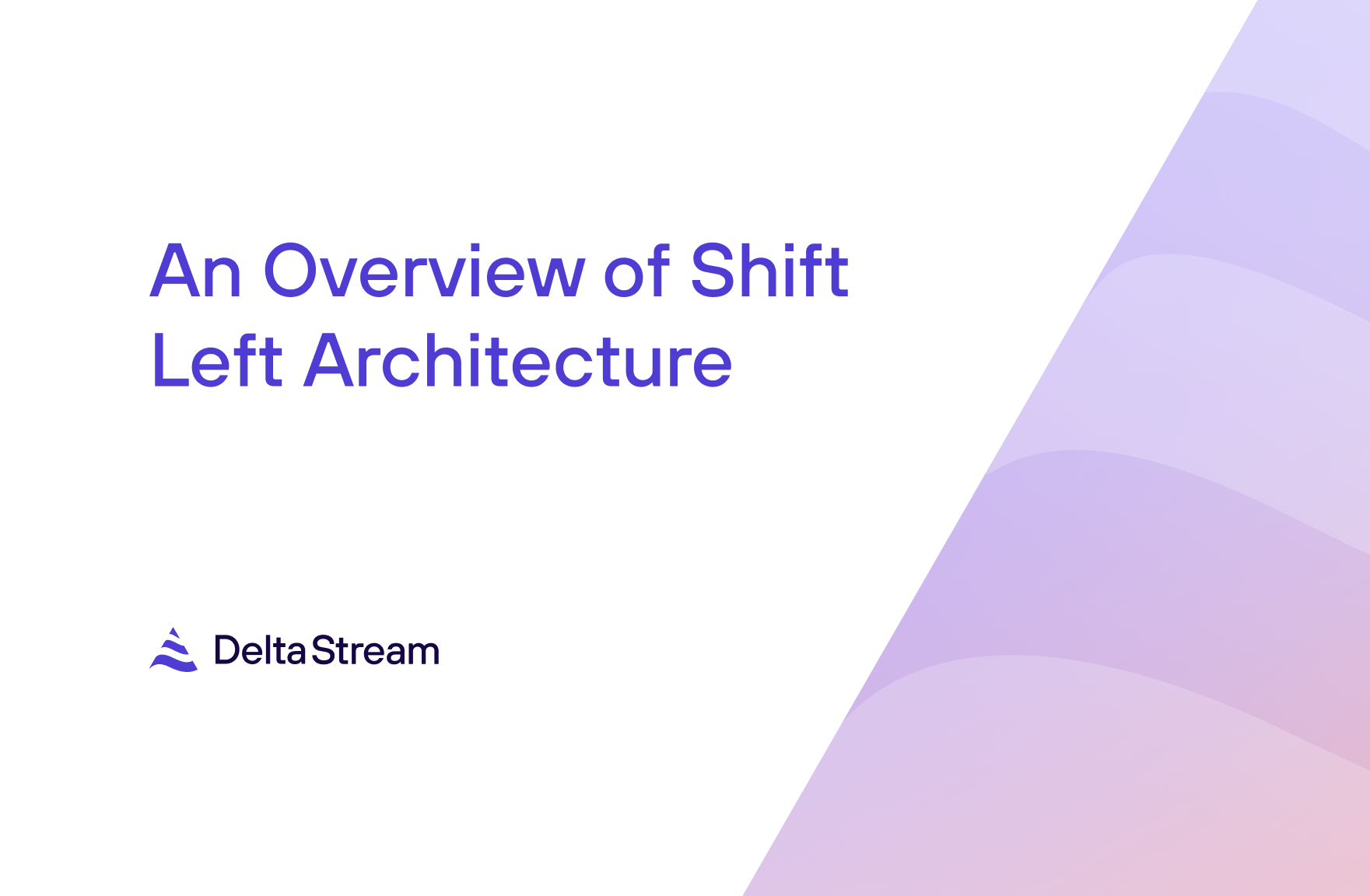24 Oct 2023
Min Read
Seamless Data Flow: How Integrations Enhance Stream Processing
Data processing systems can be broadly classified into 2 categories. batch processing & stream processing. Enterprises often use both streaming and batch processing systems because they serve different purposes and have distinct advantages, and using them together can provide a more comprehensive and flexible approach to data processing and analysis. Stream processing platforms help organizations process data as close to real-time as possible which is important for handling use-cases that are latency sensitive. Some examples include monitoring IoT sensors, fraud detection and threat detection. Batch processing systems are useful for a different set of situations – for example, when you want to analyze past data to find patterns or handle a lot of data from different sources.
Integrating between systems
The need for stream and batch processing is exactly why you are seeing companies implementing “lambda architecture”, which brings the best of both worlds together. In this architecture you generally see batch processing & stream processing systems working together to serve multiple use-case. So for these enterprises it’s important to be able to:
- Move data between these systems seamlessly - ETL
- Make data products available to users in their preferred format/platform
- Continue using existing systems while leveraging new technologies to improve overall efficiency
Having the ability to process and prepare data as soon as it arrives for downstream consumption is an extremely critical function in the data landscape. For this you need to be able to 1. EXTRACT data from source systems to process and after processing, 2. LOAD the data into your platform of choice. This is precisely where stream processing platforms & integrations come into the picture. While integrations help you extract and load data, Stream processing helps you with the Transformation.
Every enterprise uses multiple disparate systems, each serving its own purpose, to manage their data. For these enterprises, it is important for data teams to produce data products in real-time and serve them across multiple data platforms that are in use. This will require a certain level of sophisticated processing, data governance and integration with commonly used data systems.
Real-world integration uses
Let’s take a look at an example which can help us understand how companies manage their data across multiple platforms and how they process, access and transfer data across them.
Consider a scenario at a Bank. You have an incoming stream of transactions from Kafka. This stream of transactions is connected to DeltaStream where you can analyze transactions as they come in and flag them in real time if you notice fraudulent activity based on various predefined rules and alert your users as soon as possible. This is extremely time sensitive and a Stream Processing Platform is best suited for such use-cases.
Now, other teams within a Bank for eg : the marketing team, would want to understand trends based on customer activity and customize how they market their products to a given customer. For this, you need to look at transactions going back to a month or a week and process it all to generate enough context. Instead of going back to the ‘source’ system you can now have DeltaStream send all the processed transactions in the right format to your batch processing systems using our Integrations so that you can:
- Have the data ready in the right format & schema for processing
- Reduce the back and forth between multiple platforms as data transits the pipeline just once - reduction in data transfer costs
- Eliminate the duplication of data sets across multiple platforms for processing
- Easily manage compliance - for eg : by reducing the footprint of your PII data.
By integrating both the batch processing and stream processing system, the entire pipeline becomes more manageable and it reduces the complexity of managing data across different systems.
Integrating with DeltaStream
It's evident that we need integration across different platforms to enable data teams to process and manage data. DeltaStream provides for all the ingredients required for such an operation. Our Stream processing platform is powered by Flink. DeltaStream’s RBAC enables you to govern and securely share data products. The integrations to Databricks and Snowflake allow for data products to be used in the data systems that your teams are using. With the launch of these integrations, you can do MORE with your data. To unlock the power of your streaming data reach out to us or request a free trial!



